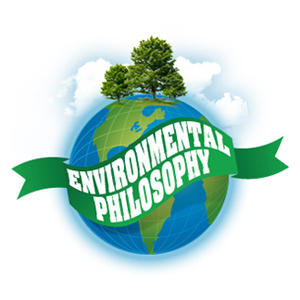
Environmental philosophy’, or as it is sometimes referred to, ‘environmental ethics’, has been characterized by a variety of theoretical disputes about the best way to provide a philosophical basis for engagement with the environmental problems facing us, now and in the future. Many of the early writers hoped that a new environmental ethics would emerge, embodying a set of principles that could help us deal with our relation to animals and the natural world in a way that traditional ethical theories seemed to have overlooked. Environmental ethics should focus on systems and not just on individual things. Our human dependence on nature cannot be understood without a deep ecological study of the interconnectedness of life. Rachel Carson’s famous 1962 book Silent Spring, which was so important in stimulating environmental awareness, is a good example of this approach to conservation.
We want to highlight three challenges faced by environmental philosophy which have emerged from recent debates. The first is the struggle to overcome an anthropocentric view of nature – the view which sees all of nature as serving human interests, and overlooks what has been called the ‘intrinsic value’ of nature. The second challenge is the question of how to define the place of humans in nature; are we to be regarded as equal to other natural beings, with no special privileges or rights, or do we have a higher role in shaping and managing nature? The final challenge is saying on what basis we should assign moral status, or what is sometimes called moral considerability, to animals and natural objects.
FIRST CHALLENGE: OVERCOMING ANTHROPOCENTRISM
At a conference in the 1970s, to challenge human-centered attitudes towards nature, the philosopher Richard Routley (who later called himself Richard Sylvan) described the following thought experiment. Suppose you’re the last person alive after a global catastrophe, and you have the power to destroy all that’s left of nature. You realize that no other person would ever be affected by its loss, since there’s no one else left. Routley argues that our clear intuition is that it still would not be right to destroy the natural world. This suggests that natural beings and objects have intrinsic value, regardless of their practical value to humans. We need to respect nature because it is right to do so, not because of some benefit it bestows on us.

SECOND CHALLENGE: OUR PLACE IN NATURE

Some environmentalists have wanted to describe humans as part of nature, doing what all creatures do, but at the same time try to limit our actions regarded as a threat to the environment. However, beavers build dams that disrupt other habitats, for instance; and all biological creatures pollute through their waste. This raises the question of just what are the proper limits to impose on our ‘natural’ intrusion into nature. Nature itself does not provide a definite answer.
A further illustration of the tension of placing humans in nature and yet assigning us special rights and duties is found in the claim that we should preserve species. Nature has eliminated many species over time, and it might very well be the case that some species cannot coexist with other species. Moreover, it seems that if the larger animals are to survive in the future, it will be because humans undertake to protect their living space. This places us in the role of stewards of nature, not just biological creatures acting in ways fixed by evolution. But if humans are placed in charge of species’ survival, it seems we are assigning ourselves a very special role in nature – a somewhat dominant role at odds with biocentic egalitarianism.
In short, how should we define our place in nature? This remains a challenge.
THIRD CHALLENGE: DEFINING MORAL STATUS
In arguing about whether to include animals in the moral realm, and thus reduce the suffering and exploitation of animals, the utilitarian philosopher Jeremy Bentham (1748-1832) commented, “Can they feel? If they can, then they deserve moral consideration.” While the animal welfare and animal rights movements have not always had the same goals as environmentalists, they do have a shared concern to find a philosophical basis for assigning moral status to organisms and natural places. In an essay from 1972 entitled ‘Should Trees Have Standing?’, the legal philosopher Christopher Stone argued that natural places should have the legal right to be protected from improper use. Stone was responding to the case of Disney versus the Sierra Club. Disney wanted to build a resort in an unspoiled area of wilderness. Stone argued that the courts should recognize the claims of natural places to be protected.
The last topic to briefly mention is the moral status of natural places. Places do not experience pleasure or pain, so what would be wrong with defacing a mountain ridge or an old-growth tree? We might say that the aesthetic violation here would spoil the beauty of nature for others, and thus cause harm. Many of the environmental debates about preserving natural places involve a conflict between those who want to use places for economic ends, and those who want to preserve the aesthetic values of nature. Of course, other considerations enter the debate as well, such as ecological balance, the importance of biological systems, etc.
In short, the extent and nature of the moral status of animals and nature remains a challenge. Yet the question of how to weigh differing values, and what moral status to assign to nature, has been the stimulus for environmental philosophy.
